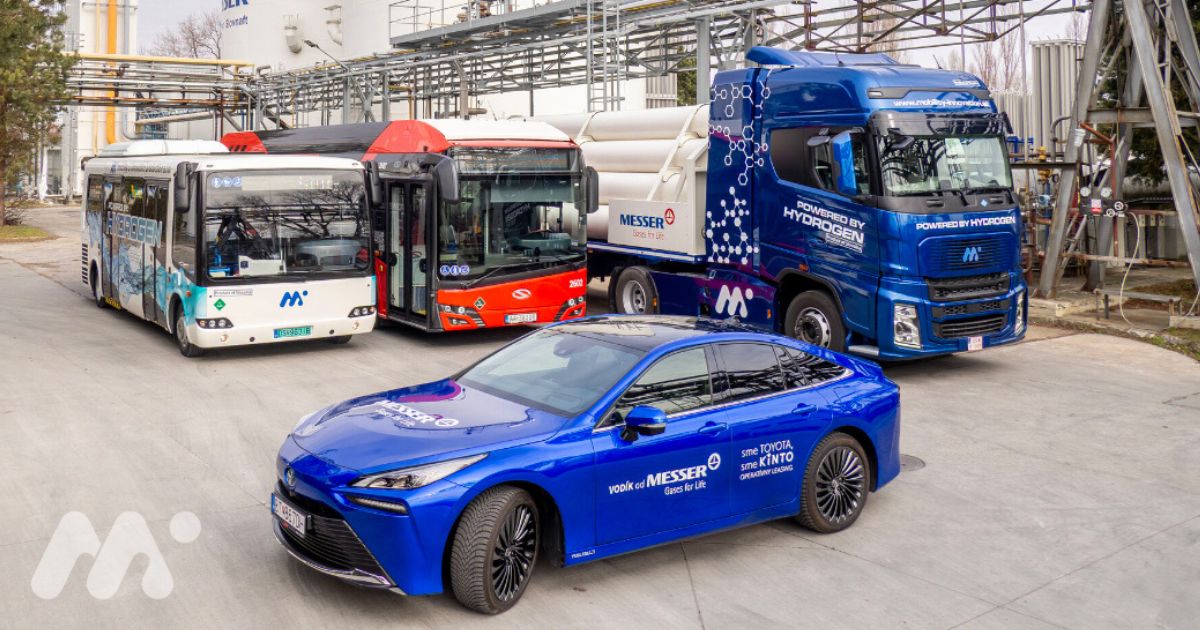The Green Deal in practice: How will it change logistics and what do companies need to prepare for?

Logistics is a fundamental pillar of the global economy, but it is also one of the biggest air polluters. That’s why the European Union has unveiled the Green Deal, an ambitious plan to achieve climate neutrality by 2050. For logistics companies, this means fundamental changes in the rules for freight transport.
How are emission standards changing? What does this mean for hauliers? And how can companies prepare? Read on!
The EU Green Deal is the European Union’s strategic plan to reduce greenhouse gas emissions and achieve carbon neutrality by 2050. In practice, this means:
✅ Stricter emission standards for trucks
✅ Promoting green alternatives such as hydrogen and electric vehicles
✅ Restrictions on diesel trucks in urban zones
✅ Subsidies and financial incentives for the transition to sustainable logistics
1️⃣ Low emission zones in cities
Many European cities (e.g. Berlin, Amsterdam, Paris) ban the entry of high emitting vehicles. Transporters have to invest in hydrogen or electric trucks to continue operating in city centres.
2️⃣ Stricter emission standards for trucks
From 2030, new trucks will have to reduce CO₂ emissions by 45%, with an expected target of 90% reduction by 2040. Companies that do not comply will face higher charges and restrictions.
3️⃣ Subsidies and financial incentives for clean transport
The EU provides financial support for companies investing in hydrogen technology, charging infrastructure or alternative fuels.
4️⃣ Promoting the construction of hydrogen infrastructure
By 2030, the EU plans to build at least 1 000 hydrogen refuelling stations, which will enable the widespread use of hydrogen trucks in international transport.
5️⃣ Changes in emission charges and tolls
Countries are gradually introducing higher tolls for internal combustion engine vehicles while providing preferential rates for zero-emission vehicles. This means that eco-friendly alternatives will be more profitable in the long run.
Germany: Berlin has expanded the low-emission zones where only green vehicles can drive.
The Netherlands.
France: Adoption of a law that favours companies with a low carbon footprint in state tenders.
Slovakia: Gradual preparation for subsidies for hydrogen vehicles in green transport.
✔ Monitor legislative changes and prepare for future regulations.
✔ Invest in green technologies – hydrogen and electric trucks will be a necessity.
✔ Use government subsidies to move towards sustainable logistics.
✔ Reduce carbon footprint to be competitive in a market where ESG is key.
The Green Deal is not a distant future – it will have a major impact on logistics in the next few years. Companies that prepare for these changes today will gain a competitive advantage and reap the benefits of green transport.
Are you ready for changes in logistics? Keep an eye on regulatory developments and take advantage of the opportunities the Green Deal brings!
How are emission standards changing? What does this mean for hauliers? And how can companies prepare? Read on!
What is the Green Deal and how will it affect logistics?
The EU Green Deal is the European Union’s strategic plan to reduce greenhouse gas emissions and achieve carbon neutrality by 2050. In practice, this means:
✅ Stricter emission standards for trucks
✅ Promoting green alternatives such as hydrogen and electric vehicles
✅ Restrictions on diesel trucks in urban zones
✅ Subsidies and financial incentives for the transition to sustainable logistics
5 major legislative changes for logistics
1️⃣ Low emission zones in cities
Many European cities (e.g. Berlin, Amsterdam, Paris) ban the entry of high emitting vehicles. Transporters have to invest in hydrogen or electric trucks to continue operating in city centres.
2️⃣ Stricter emission standards for trucks
From 2030, new trucks will have to reduce CO₂ emissions by 45%, with an expected target of 90% reduction by 2040. Companies that do not comply will face higher charges and restrictions.
3️⃣ Subsidies and financial incentives for clean transport
The EU provides financial support for companies investing in hydrogen technology, charging infrastructure or alternative fuels.
4️⃣ Promoting the construction of hydrogen infrastructure
By 2030, the EU plans to build at least 1 000 hydrogen refuelling stations, which will enable the widespread use of hydrogen trucks in international transport.
5️⃣ Changes in emission charges and tolls
Countries are gradually introducing higher tolls for internal combustion engine vehicles while providing preferential rates for zero-emission vehicles. This means that eco-friendly alternatives will be more profitable in the long run.
Practical examples: how do companies prepare?
Germany: Berlin has expanded the low-emission zones where only green vehicles can drive.
The Netherlands.
France: Adoption of a law that favours companies with a low carbon footprint in state tenders.
Slovakia: Gradual preparation for subsidies for hydrogen vehicles in green transport.
What can companies do today?
✔ Monitor legislative changes and prepare for future regulations.
✔ Invest in green technologies – hydrogen and electric trucks will be a necessity.
✔ Use government subsidies to move towards sustainable logistics.
✔ Reduce carbon footprint to be competitive in a market where ESG is key.
Conclusion
The Green Deal is not a distant future – it will have a major impact on logistics in the next few years. Companies that prepare for these changes today will gain a competitive advantage and reap the benefits of green transport.
Are you ready for changes in logistics? Keep an eye on regulatory developments and take advantage of the opportunities the Green Deal brings!